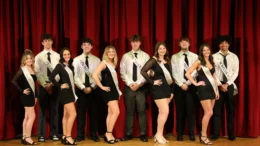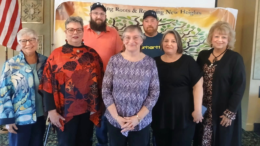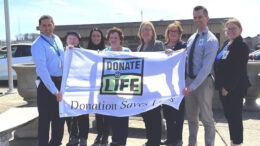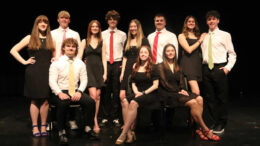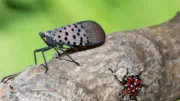Many people move to new homes where the previous owners had planted fruit trees. If the owner did not properly care for the trees, the results are large, ungainly giants that are completely out of control and are an unsightly mess. In other instances, people move into old farmhouses where trees were planted 30 or 40 years ago. These, too, if they have been neglected, are large and difficult to maintain. In many cases, these old trees can be brought back to a more manageable state. The primary means of renovating older trees is through judicious and properly selected pruning cuts. Apple and pear trees are most easily renovated. Cherries also can be renovated, but to a lesser degree and with less success. Peaches and nectarines are not recommended for renovation and are not considered here. It is easier to cut a peach tree down and plant a new tree.
Ask several questions first
Several questions should be answered before an attempt is made to rejuvenate an old tree. Is the tree worth saving? Did it formerly bear unique fruit that was exceptionally good for fresh eating or canning? Is the tree structurally sound-do the trunk and main limbs seem capable of bearing a heavy load of fruit, or would they simply break when heavily laden? Is the tree in a suitable location or does it shade the garden or interfere with lawn mowing? Is it full of insects and diseases? These are among the most important issues one should consider before proceeding.
Should I prune or plant a new tree?
Examine the trunk and butt ends of the major branches. They should be reasonably sound and free from large areas of dead wood on which the bark has died. Although much of the trunk and parts of the major limbs are nonfunctioning, they do provide structural strength to the entire tree. If the trunk and parts of the major limbs are hollow, efforts to save the tree will most likely be unsuccessful. Areas of branches and the trunk that appear orangish-brown and scaly also are an indication of poor health. A thin green line, visible when the bark is peeled back gently with a pocketknife, indicates a healthy branch and tissue. If this examination reveals serious structural and health problems, you might be better off vegetatively propagating the tree or ordering a new one of the same variety for planting. The article, Fruit Tree Propagation – Grafting and Budding(https://extension.psu.edu/fruit-tree-propagation-grafting-and-budding) explains how to save the tree vegetatively. A series of Extension Learn Now videos on grafting is also available:
Fruit Tree Propagation – Bench Grafting
Fruit Tree Propagation – Bark Grafting
Bud Grafting Apple Trees
Pruning to renovate an older fruit tree
If you decide to rejuvenate the tree, the first step is to prune out all broken and dead branches and cut away the sucker growth around the bottom of the trunk. Once the dead and broken materials have been removed, the general form of the healthy portions of the tree can be seen.
The second step is to decide how big you want the tree to be. Realize, however, that you can never make a seedling tree into a dwarf size no matter how much you prune. A true dwarf tree can be maintained at about 6 to 10 feet tall, a semidwarf at about 10 to 16 feet and a standard at about 16 to 20 feet tall. Trees that have not been pruned in many years should not be reduced to the desired height in a single pruning. To prevent excessive growth and excessive sunburn on previously shaded portions of the tree, you should plan on reducing tree height over a period of 3 years by removing no more than one-third of the tree in one season. If, for example, the tree is currently 23 feet tall and you want to bring it back to about 14 feet, lower the overall height by 3 feet per year.
To reduce tree height, selectively cut to leave branches growing more horizontal to the ground. Thin out excessive branches as well. Do not indiscriminately cut all the shoots in half. Do not “dehorn” the tree, as some people mistakenly do with large shade trees to reduce their height. After the desired height and limb spread have been decided, look closely at the major branches to determine where they could be cut to bring the tree into conformity.
It is important that no nitrogen be applied immediately after the initial heavy cutting. Nitrogen should not be applied because the root system under the tree is large enough to provide water, oxygen, and stored food reserves to all of the aboveground portions of the tree before any cutting was done. In effect, the first year’s pruning means that the same amount of root system is supplying fewer growing points. Adding more nitrogen fertilizer would stimulate excessive vegetative growth that would further complicate next year’s pruning. The remaining portion of the tree should be protected from insects and diseases to ensure that the fruit produced will be usable and that the tree will form flower buds for next year’s crop. Unfortunately, on tall, large trees it is often difficult to reach the tops. Most small hand sprayers can reach at best 10 to 12 feet up into a tree. It will be difficult, therefore, to control diseases and insects in the larger trees until they have been lowered.
In the late winter or early spring of the following year, before growth begins, prune the tree again. This time, however, limit the pruning to thinning out the bearing wood. Take time to look carefully at the tree. Notice where the 1- to 4-year-old wood pieces are located — this is important because the best fruit grows only on spurs that are 2 to 3 years old. To promote better flower formation and good light penetration into the tree, separate these bearing surfaces by about 18 to 24 vertical inches from any other layers. Another way to visualize this type of pruning is to imagine the removal of 65 to 70 percent of the bearing surface. This is accomplished primarily through thinning-out cuts, i.e., removing branches back to their point of origin; versus heading cuts where branches are cut in half similar to shearing ornamental hedges. Heading cuts result in excessive regrowth, denser canopies, and lower sunlight penetration.
During the summer after the first winter pruning, remove the numerous water sprouts that will grow on the heavily pruned tree.
Water sprouts are rapidly growing vegetative shoots that develop around pruning cuts. The method of removal is important. If you use pruning shears, you can never quite remove the entire shoot. Instead, pull the shoots off the trunk in mid-June when they are about 10 to 12 inches long. Keep pulling these shoots off throughout the season on the major scaffolds. The shoots can be pulled off safely as long as their bases remain tender and green. Stop when the base of the shoot becomes woody and does not easily pull off. Also during this time, or from late May to early June, thin the fruit down to 1 fruit per cluster and space the clusters about 6 to 10 inches apart. This practice will ensure that the remaining fruit will attain the largest possible size.
Following the last year of rejuvenation pruning, apply a light application of fertilizer. A good rule of thumb is to apply 0.5 pounds of 5-10-10 for each inch of trunk diameter, measured 18 to 24 inches above the soil line. Apply fertilizer at any time from December until April. Scatter it under the entire limb spread of the tree, but keep it at least 6 inches away from the trunk.
Avoid making “bench cuts.” These are cuts that attempt to reduce upright growing branches and force growth to be more horizontal. They result in weakly structured limbs that tend to break.
Fruit trees are pruned when they are dormant, sometime in late winter. However, summer pruning can be helpful in shaping the tree to reduce shading of lower limbs. In the example below, we are pruning the trees in mid-July by removing the limbs in the upper portion of the trees that are extending out horizontally into the row. If you are dealing with only one tree, remove limbs that are growing out east and west. The result is that you keep the top portion of the tree narrower than the lower limbs.
This educational blog is a series of informative articles from the Penn State Master Gardeners volunteers plus news concerning the group and their activities. For more information, click here.








